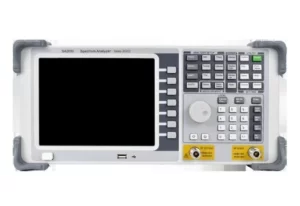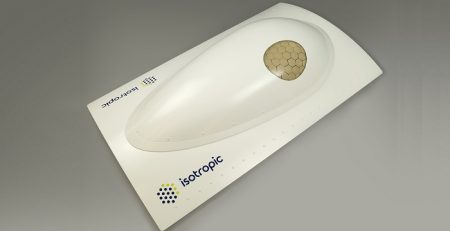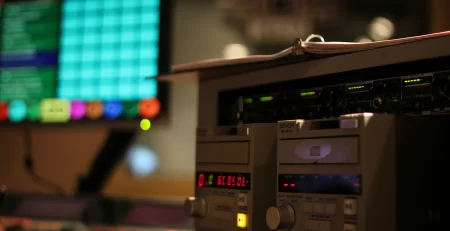Taming Electromagnetic Emissions: A Spectrum Analyzer’s Guide to EMC Compliance
Spectrum analyzer is the main tool for EMC compliance. Read this guide, you will know Spectrum analyzer’ significant role in EMC Compliance.
 What is EMC Testing?
What is EMC Testing?
It is given that EMC-compliant EMC technologies enable electronic equipment to perform as it should–and therefore not get unreasonably disturbed by problems with your operation, finally causing anger in the hands of assembly examiners as well. EMC testing will allow authors to gauge electromagnetic emission and immunity of products from which these may shelter electric current. Such latitude is confined by this reservoir not far from its source of origin but just a bit–the plant shall not get involved as it should. EMC tests it is that give them the answer. This confirms how much power and protection an electronic device has.
Why is EMC Testing Crucial?
EMC testing is crucial for several reasons:
- Regulatory compliance:Governments worldwide have established EMC regulations to limit electromagnetic interference. EMC testing ensures devices meet these standards, allowing them to be legally sold and used in specific regions.
- Product reliability:Electromagnetic interference can disrupt the operation of electronic devices. EMC testing helps identify potential interference issues, leading to improved product reliability and reduced risk of malfunctions.
- Interoperability:Electronic devices often operate near each other. EMC testing promotes interoperability, ensuring that devices can coexist without interfering with each other’s performance.
How Do Spectrum Analyzers Factor into EMC Testing?
Spectrum analyzers are essential tools in EMC testing. They allow you to visualize and measure the frequency content of electromagnetic signals, providing insights into the electromagnetic behavior of electronic devices. In EMC testing, spectrum analyzers are used for:
- Emissions testing:Spectrum analyzers measure the electromagnetic radiation emitted by a device under test (DUT), helping determine compliance with regulatory limits.
- Immunity testing:Spectrum analyzers, often in conjunction with signal generators, can generate controlled electromagnetic fields to test a device’s susceptibility to interference.
What is Conducted Emissions Testing?
Conducted emissions testing focuses on the electromagnetic energy emitted by a device through its power and signal cables. These emissions can travel along cables and interfere with other devices connected to the same power network or communication lines.
How Do You Set Up a Spectrum Analyzer for Conducted Emissions?
To set up a spectrum analyzer for conducted emissions testing:
- Connect a Line Impedance Stabilization Network (LISN):A LISN is a device that isolates the DUT from the power source and provides a standardized impedance for measuring conducted emissions. Connect the LISN to the DUT’s power input and the spectrum analyzer’s RF input.
- Configure the spectrum analyzer:Set the spectrum analyzer’s frequency range, resolution bandwidth (RBW), and other parameters according to the relevant EMC standard.
How Do You Use a LISN?
The LISN serves two primary functions:
- Isolation:It prevents power line disturbances from affecting the measurement and isolates the DUT from the power source.
- Impedance stabilization:It provides a consistent impedance for measuring conducted emissions, ensuring repeatable and comparable results across different test environments.
How Do You Interpret Conducted Emissions Results?
On the analyzer screen, the frequency and amplitude of conducted emissions can be seen. We have to keep on making efforts to reduce this. The amount controls are exceeded, then possibly other data must be found and other paths in using different objects might work too – to not only get them up to par with limits but also put an end to their over limits generation. Over limits emissions will result in surgery, treatment, or preventive maintenance. But during the passing years, such weavings of froth packs with urethane foam inserts might have occurred as well. Now it is fiberglass mesh pads to try.
What is Radiated Emissions Testing?
Radiated emissions testing measures the electromagnetic energy radiated from a device through the air, not through cables. These emissions can interfere with the operation of other wireless devices or systems.
How Do You Set Up a Spectrum Analyzer for Radiated Emissions?
To set up a spectrum analyzer for radiated emissions testing:
- Select an appropriate antenna:The choice of antenna depends on the frequency range and anticipated field strength of the emissions. RFecho offers a variety of antennas suitable for EMC testing, including broadband dual-ridged horn antennas, biconical antennas, and log-periodic antennas.
- Position the antenna:Place the antenna at a specified distance from the DUT, as defined by the relevant EMC standard.
- Configure the spectrum analyzer:Set the frequency range, RBW, and other parameters based on the EMC standard.
How Do You Choose and Position the Antenna?
The antenna must have a matching frequency range to the band where it is to be used; in fact, if that antenna goes outside this bracket then it can well be called “spreading milk.” Antenna sensitivity is in direct proportion to its so-called antenna factor, and this is an essential cause of accurate field strength measurement. Typically an antenna kit must include a table of antenna factors, this gives us the precise figures for all the different outputs of radio signals obtained using a spectrum analyzer.
The antenna position and measurement distance are standardized in EMC standards to ensure consistent and repeatable results.
What Ambient Noise Considerations Are There?
Ambient noise from other sources, such as radio and TV broadcasts, can affect radiated emissions measurements. Here are ways to mitigate ambient noise:
- Perform measurements in a shielded environment:Anechoic chambers are specifically designed to minimize reflections and external noise.
- Identify and minimize sources of noise:Turn off unnecessary equipment in the vicinity of the test setup.
- Use a lower bandwidth antenna:A lower bandwidth antenna can improve the signal-to-noise ratio by reducing the amount of ambient noise captured.
Spectrum Analyzer Settings and Considerations
 What About Amplitude Units and Display?
What About Amplitude Units and Display?
Which EMC conventional is pertinent identically influences the selection of units among applications. The choice of units usually depends upon the application as well as which EMC standard is applicable. There are many different ways to measure AC/DC voltage sensitivity using a special formula. The EMF conversion of unity is a key specification for any instrumentation amplifier. Apart from this notice, the driving influence of potential variations in particular is characterized by such things as varying depth and pressure factors.
What is Resolution Bandwidth (RBW) and Frequency Resolution?
According to the spectrum analyzer’s internal filter bandwidth, a higher RBW means better aliasing performance. Every lower RBW offers better frequency resolution but extends the meter and less resolution with it. What it gives in better frequencies, with the lower RBW delay becomes measurement, and recorder of those measurements also takes longer.
Resolution bandwidth (RBW) measures the ability to tell whether two signals can be resolved separately by their frequency components. The smaller the RBW, the more frequency points must be processed. For example, 10 Hz is the lowest RBW currently available on instruments. According to the EMC test regulations, changing both the RBW and frequency sweep settings is necessary. For the CLP-1110 Signal Analyzer, the RBW settings are 10 Hz to 1 kHz and the frequency sweep can go down to 100 ( Hz and lower ).
What About Sweep Time and Detectors?
Sweep time is the time it takes the spectrum analyzer to scan across the specified frequency range. A longer sweep time can improve sensitivity but will increase the overall measurement time.
Detectors convert the RF signal to a DC level for display. Common detectors include:
- Peak detector:Measures the peak amplitude of the signal.
- Average detector:Measures the average amplitude of the signal.
- Quasi-peak detector:Measures the average amplitude of the signal, with an emphasis on the peaks. Quasi-peak detectors are commonly used in EMC testing because they correlate well with the subjective perception of interference.
What are the Internal Attenuator and Pre-amplifier?
The internal attenuator reduces the amplitude of the input signal to protect the spectrum analyzer’s front end and prevent overload.
The pre-amplifier amplifies weak signals to improve sensitivity. However, using the pre-amplifier can increase the noise floor, potentially reducing the dynamic range of the measurement.
What Distortion Considerations Are There?
Spectrum analyzers can introduce distortions into the measured signal. Harmonic and intermodulation distortion can create spurious signals that may be mistaken for actual emissions.
What Sensitivity Considerations Are There?
The sensitivity of a spectrum analyzer refers to its ability to detect weak signals. The noise floor of the spectrum analyzer limits its sensitivity. You can improve sensitivity by:
- Using a lower RBW.
- Increasing the sweep time.
- Using a pre-amplifier (while considering the potential for increased noise).
When performing radiated emissions testing, consider the antenna factor, which affects the overall sensitivity of the measurement. A higher antenna factor will increase the base noise level.
What is Input Protection?
Spectrum analyzers have limited input power handling capabilities. Excessive input power can damage the sensitive front-end components. To protect the spectrum analyzer:
- Use an external attenuator:An external attenuator can reduce the signal amplitude before it reaches the spectrum analyzer’s input.
- Avoid voltage transients:Powering the DUT on and off while the spectrum analyzer is connected can generate voltage transients that could damage the input. Always disconnect the spectrum analyzer before powering the DUT on or off.
RFecho: Your Trusted Spectrum Analyzer Partner
What is RFecho’s Expertise in RF and Microwave Technology?
RFecho specializes in RF and microwave technology. They offer a wide range of products, including antennas, filters, amplifiers, and other components used in RF applications. RFecho boasts 15 years of experience as an RF antenna expert.
What Spectrum Analyzers Does RFecho Offer?
RFecho’s product portfolio includes spectrum analyzers, categorized under “Testing Instrument”. They offer signal generators and spectrum analyzers, suggesting expertise in both generating and analyzing RF signals.
Conclusion
It is extremely common to make errors when sourcing from a Spectrum Analyzer and therefore will dirty the results that we get in EMC testing. Readings will be incorrect with the wrong settings or methods.
What Advancements in Spectrum Analyzer Technology Are There?
Spectrum analyzer technology continues to evolve, with advancements in areas like:
- Digital signal processing (DSP):DSP enables more sophisticated signal analysis capabilities and improved measurement accuracy. Some newer analyzers offer the capability to select standard-conformant EMI measurement routines, which also ensure that adjacent measurement points have the correct frequency spacing.
- Real-time analysis:Real-time spectrum analyzers can capture and analyze transient events that might be missed by traditional swept-tuned analyzers.
- Portability and user-friendliness:Modern spectrum analyzers are becoming increasingly portable and user-friendly, with intuitive interfaces and features that simplify complex measurements.



 What is EMC Testing?
What is EMC Testing? What About Amplitude Units and Display?
What About Amplitude Units and Display?








